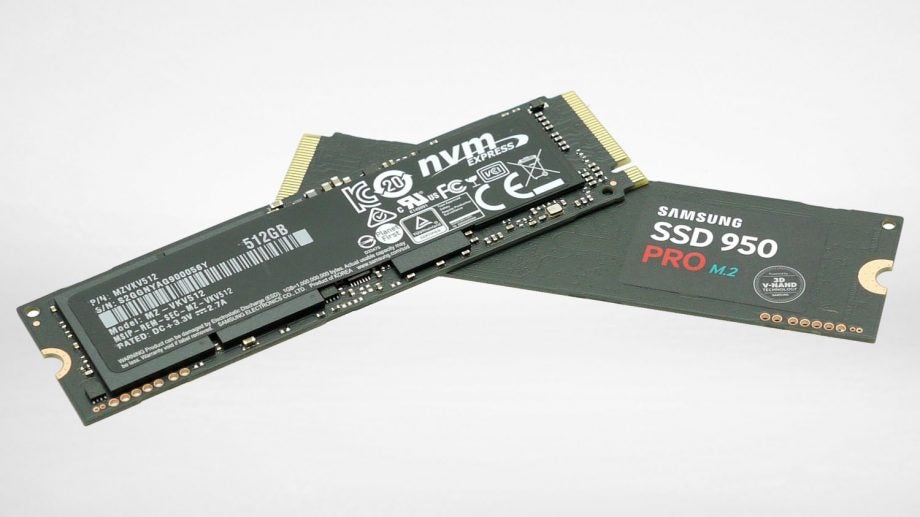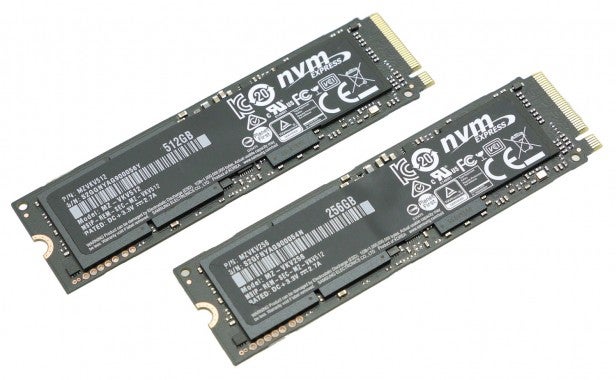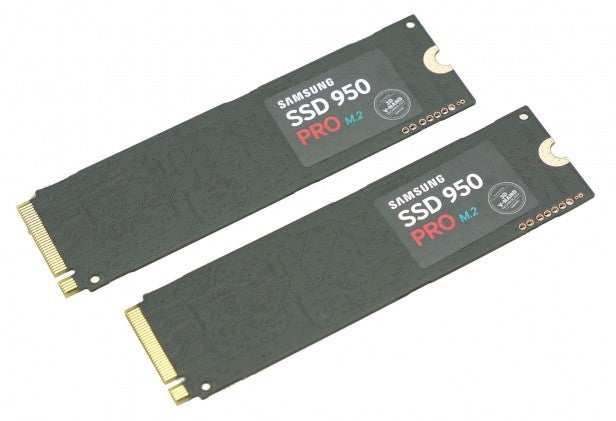Samsung 950 Pro M.2 SSD Review
Samsung 950 Pro M.2 SSD
Samsung's latest SSDs are tiny but super-fast

Sections
- Page 1 Samsung 950 Pro M.2 SSD Review
- Page 2 Performance and Verdict Review
Verdict
Pros
- Incredibly fast read and write performance
- Competitively priced
- Tiny M.2 form factor
- 5yr warranty
Cons
- Limited motherboard/laptop compatibility
- Overkill for many users
- May not be bootable on some systems
Key Specifications
- Review Price: £169.99
What are the Samsung 950 Pro M.2 256GB and 512GB SSDs?
Samsung’s latest SSDs combine the company’s high-speed V-NAND memory, the new NVMe standard, an ultra-small M.2 form factor and a PCI Express interface to provide a fast and capacious storage upgrade.
Available in either 512GB or 256GB sizes, the drives can be installed into the latest desktop motherboards or be used as upgrades for the SSDs in many laptops. With read speeds rated at up to 2,500MB/sec and write speeds up to 1,500MB/sec, they’re among the fastest drives of their type on the market.
Samsung 950 Pro M.2 256GB and 512GB SSD – Design and Features
As stated in my review of the Samsung SSD 950 Evo m.2 drives, there are few things as nondescript as an SSD. They’re simply PCBs housing numerous chips; unlike motherboards, for example, there aren’t any extra features to speak of.
For what it’s worth, Samsung has adorned these latest drives with an all-black finish that looks particularly neat on the reverse side where there are no chips. It’s only a shame that this is the side that will be facing your motherboard once installed.
Related: Best M.2 SSDs

Note that the 950 Pro M.2 drives are 80mm long. With the M.2 standard allowing for a greater number of varying board lengths, ensure you double-check which size is right for your motherboard/laptop.
Unlike the 850 Evo m.2 drives, the 950 Pro use the PCI Express interface – so again, check compatibility with for your existing hardware. This change in interface opens up the potential speed of these drives from the maximum 600MB/sec of SATA to 15.76GB/sec.
Also new to these drives is the use of the NVMe standard, which we first saw with the lightning-fast Intel SSD 750-series drives. This is a new interface protocol specifically designed for SSDs – rather than previous standards that were for hard drives – and brings with it a boost in speed right across the board.
Related: Intel SSD 750
Again, though, you’ll want to confirm that your motherboard/laptop offers support for all these features, particularly with NVMe. Without BIOS/UEFI support, the drive may continue to work but it may not be bootable.
The above features combine with Samsung’s latest 3D V-NAND memory chips. Here, the transistors that make up the memory are stacked vertically as well as horizontally, which means they’re far more dense than conventional NAND.
The result is Samsung claims that the 512GB drive can read at up to 2,500MB/sec and write at 1,500MB/sec, while the 256GB drive can read at 2,200MB/sec and write at 900MB/sec. What’s more, the drives have a total write life of 400TB and 200TB respectively, which amounts to completely filling and rewriting the drive more than 700 times.
As such, Samsung has been able to include an impressive five-year warranty with these drives, and it rates them as having a mean time between failure of 1.5million hours.

